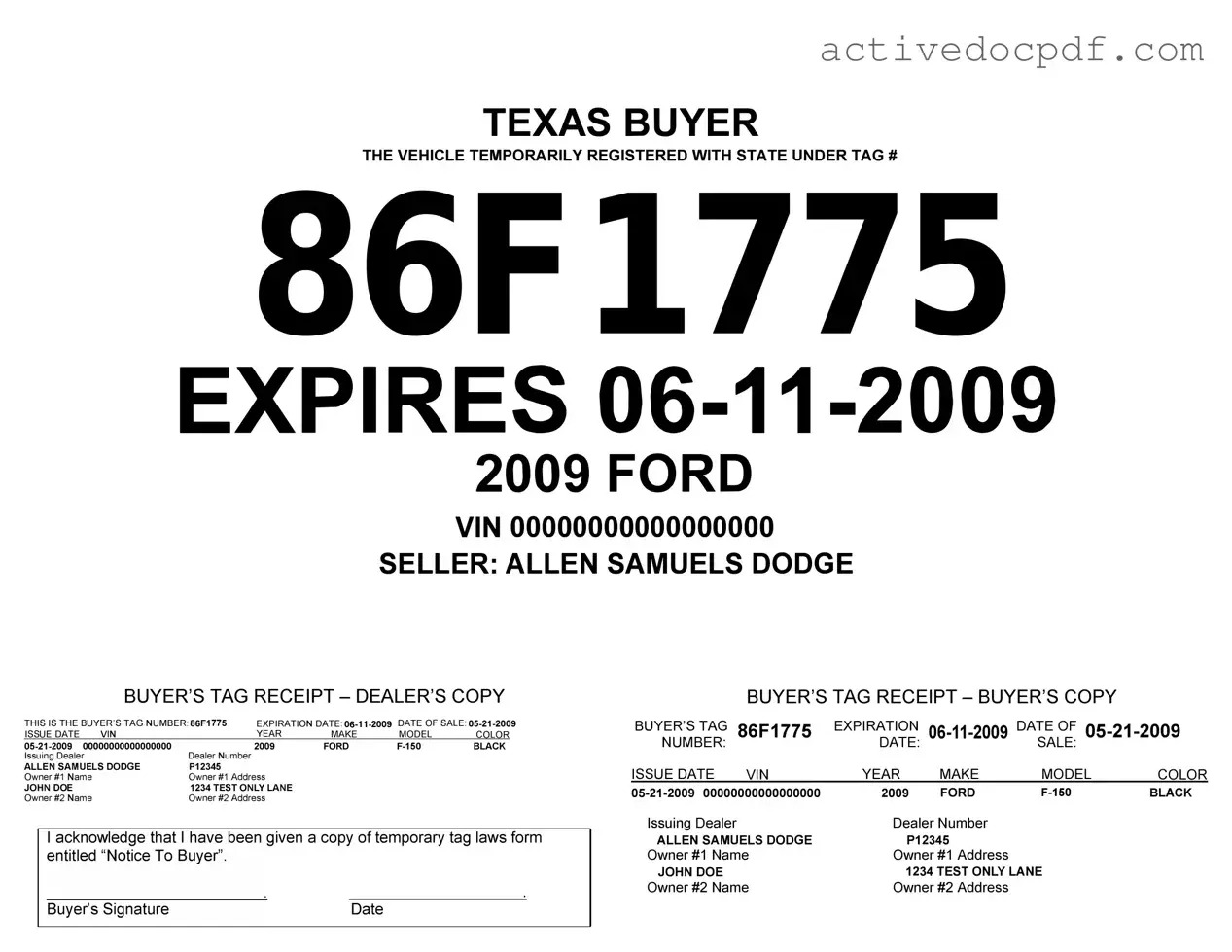What is a Texas Temporary Tag?
A Texas Temporary Tag is a short-term vehicle registration issued by the Texas Department of Motor Vehicles (TxDMV). It allows drivers to legally operate a vehicle while waiting for permanent registration and license plates. These tags are typically valid for 30 days.
Who can apply for a Temporary Tag?
Anyone who has purchased a vehicle and needs to drive it before receiving permanent registration can apply for a Temporary Tag. This includes individuals buying from dealerships or private sellers.
How do I obtain a Temporary Tag?
To obtain a Temporary Tag, follow these steps:
-
Visit a local county tax office or a TxDMV regional service center.
-
Provide proof of vehicle ownership, such as a bill of sale or title.
-
Complete the Temporary Tag application form.
-
Pay the required fee, which varies by county.
You will need to provide the following information:
-
Your name and address.
-
Vehicle identification number (VIN).
-
Make, model, and year of the vehicle.
-
Proof of insurance.
How much does a Temporary Tag cost?
The cost of a Temporary Tag can vary by county. Typically, the fee ranges from $5 to $25. It is advisable to check with your local county tax office for the exact amount.
How long is a Temporary Tag valid?
A Temporary Tag is valid for 30 days from the date of issuance. If you need more time, you may need to apply for an extension or obtain permanent registration.
Can I use a Temporary Tag on any vehicle?
No, a Temporary Tag is specific to the vehicle for which it was issued. It cannot be transferred to another vehicle. If you purchase a different vehicle, you must apply for a new Temporary Tag.
What should I do if my Temporary Tag expires?
If your Temporary Tag expires, you must refrain from driving the vehicle until you obtain permanent registration or a new Temporary Tag. To avoid penalties, apply for a new Temporary Tag or complete the registration process before the expiration date.
For more information, visit the Texas Department of Motor Vehicles website or contact your local county tax office. They can provide specific details and answer any questions you may have.
